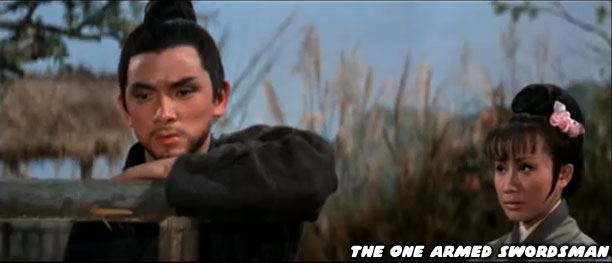
Jimmy gained prominence as a leading man in 1967 when he appeared in the One Armed Swordsman. His portrayal of a melancholy martial artist named Fang Gang won over critics. In the film he lost his arm in a cruel accident. He disregarded the advances of his master's daughter and when she struck at him out of jealousy she ended up cutting off his arm. He threw himself into a river thinking he was done for but was rescued by the daughter of a farmer living downstream. To help him cope with his loss his rescuer gave Fang a manual of fighting techniques which emphasized one armed stances. He used this book to become a master of the short sword style. Fang eventually fell in love with the girl that saved his life. He soon learned of a roving gang that was using some sort of secret weapon that could trap swords. They used this to defeat the best swordsmen and rob villages. He used his newfound skills to defeat the gang and save his former master.
The film and character proved so popular that it would be revisited shortly after. The 1969 film Return of the One Armed Swordsman was an even bigger hit. The budget seemed much greater as there were more location shots than in the first film. There were also more villains to be defeated, better costumes and special effects.
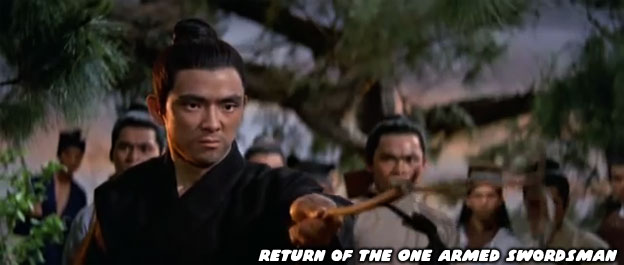
The popularity of the series caused Jimmy to do something unheard of. He broke his contract with the Shaw Bros. studio, then the biggest if not best known martial arts production company in Hong Kong. Wang Yu decided to produce his own films thinking that he could do better. He found that the one armed hero was his niche and created a new character by the name of Tien Lung. This gamble earned him a blacklisting from Hong Kong cinema, not to mention a lawsuit from the Shaw Bros. Jimmy had to set up shop in Taiwan where he would film the majority of his projects. He wrote, directed and starred in the 1971 film the One Armed Boxer.
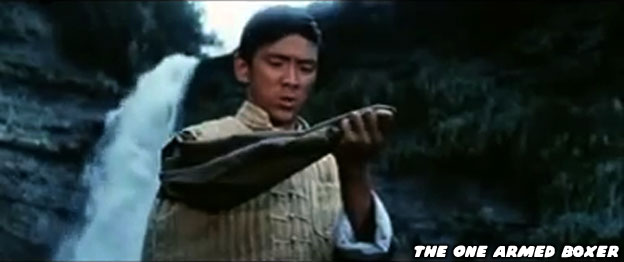
This new film rewrote the book on martial arts cinema. Up until that point most of the martial arts and martial artists were Chinese. Every film seemed to be a variation of the previous Chinese legend. Wang Yu introduced a group of foreign fighting masters that were supposedly from all over Asia. The authenticity of their fighting styles and cultural representations were questionable if not outright racist. The diversity of looks, costumes and styles were unforgettable. In the film the group of fighters was hired by a drug lord to beat up the members of a local martial arts school. The drug lord wanted revenge because his own men, the hook gang, were beaten up by the martial artists.
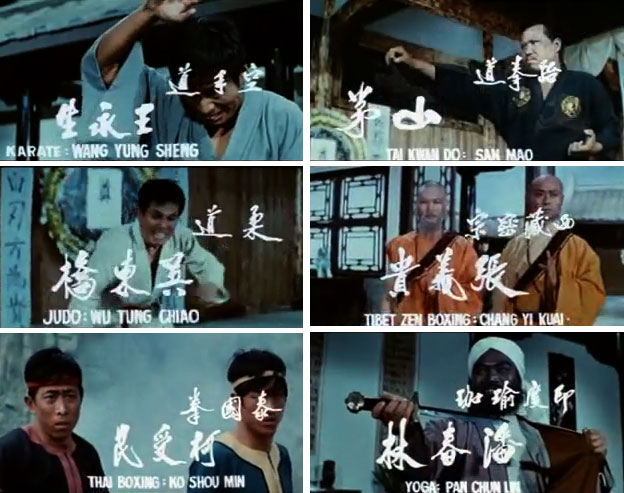
Wang Yu made sure to give each of the foreign characters fantastic abilities to go along with their techniques. Most of the assassins fighting Tien Lung and his allies were superhumanly strong and agile. They were able to leap great distances and move with blurring speed. The leader of these men was a karate fighter named Chi Park Dao Long, played by Lung Fei. The character was even more sure of his abilities than the legendary Pai Mei. His variation of karate was used to kill opponents. It was far removed from the "empty hand" defensive techniques taught in the Japanese schools. To make the character appear more powerful than the rest he had all the trappings of a cartoon villain. He wore black with a red belt, had long unruly hair, sported fangs, had claw-like nails and black palms. He appeared more like a demon than a martial artist. This character and the other villains in the Wang Yu films undoubtedly helped inspire the characters in Street Fighter and Street Fighter II.
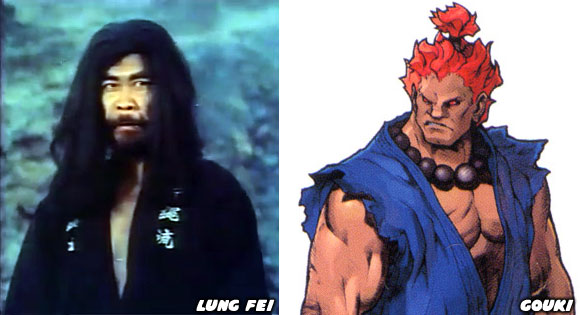
Early on in the movie Lung Fei chopped off Tien's arm with his bare hands, showing the power that he had at his disposal. This made the one armed origin story much better, especially when compared to how Jimmy lost his arm in the swordsman movie. Tien spent some time in despair thinking that his life as a fighter was over. Xiao Yu the daughter of a nearby farmer told Tien that her father had a powerful medicine that could make anybody stronger. Even a one-armed man could be more powerful than a regular fighter. He agreed and went through the brutal treatment which involved him burning his arm in a fire pit to kill off the nerve endings. Then the arm was put in a medicinal broth where it became super strong. He began to work on his arm as if he were forging a sword. He used brutal training regiments which included dropping large stones on his hands to toughen it up. His goal was to develop an arm strong enough to kill with a single punch. He figured he might not get a chance for a second strike.
The film was a hit and it financed Wang Yu's next projects. A few years later he revisited the character or Tien Lung. He wrote and directed a sequel in 1976 called the Master of the Flying Guillotine. The story picked up shortly after the events of the first movie. In it an evil monk named Fung Sheng Wu Chi learned that two of his disciples Chow Lung and Chow Fu, the students of Tibet Zen Boxing, were killed by Tien. The blind monk went on a hunt for the boxer. He went to the last known location of the character, a school he had founded a few months after the events of the first film. As if this set up was not enough for a martial arts film Wang Yu had the story take place during a fighting tournament. Dozens of fighters from around Asia were invited to take part in the tournament. The diverse styles, characterizations and costumes would end up coloring the world of fighting games for years to come.
The movie was by no means cheap to produce. The cost for all the actors, sets and special effects had gone up as the scope of the project was much greater than the previous film. There was a reason that Jimmy had to ramp up the spectacle. After the One Armed Boxer was released the movie industry had another revolution. Bruce Lee had returned to Hong Kong to begin acting in martial arts pictures. Within a short while Lee would move from actor to choreographer and finally writer / producer. Lee had stolen Wang Yu's thunder and was releasing films that were more successful with audiences. In order to win viewers back Jimmy had to pull out all the stops and return to his popular one-armed hero. He included elements of the supernatural, violence and gore on top of some memorable character designs.
The film did very well at the box office in China and even abroad. Like other martial arts films it began to get screen time in western theaters, making an impression on young designers, directors and developers outside of Asia. If the One Armed Boxer planted the seeds to Street Fighter then the Master of the Flying Guillotine was the forest that shaped the entire fighting game industry. Capcom, SNK and Midway (RIP) owed a tremendous debt to the films and Wang Yu's progressive ideas.
Wang Yu managed to produce a lot of films through the '70s and '80s but his time at the top was short-lived thanks to the success of the Lee films. This did not stop Jimmy from influencing the genre in other ways. In the late 70's he helped out a young martial artist that was having a dispute with a producer in Hong Kong. The rumors were that the producer had triad (mafia) ties and the artist was in some trouble. Wang Yu helped the artist out and in return he appeared in a few of his films. The artist was Jackie Chan and his films would be ranked among the most popular ever produced. In the 1983 film Fantasy Mission Force Wang Yu played a villain against the new Hong Kong darling.
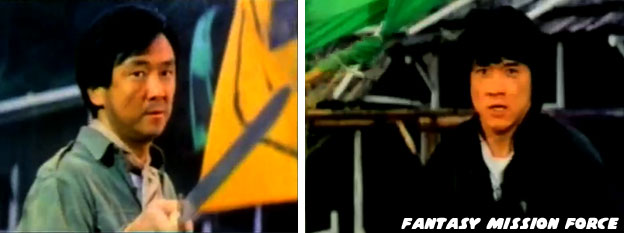
The true life of Wang Yu had more plot turns than any of his films. The person had a long history getting into trouble. He had numerous drunken brawls, public affairs and was even charged and acquitted of murder. Those that hired him to work on projects did so at the risk of their own reputation. His former steady stream of work turned into a light trickle from the 80's onward.
The actor had a sort of comeback in the 2011 martial arts film Wu Xia. The film was a subtle deconstruction of the martial arts fable. Directed and produced by Peter Chan and starring Donnie Yen, it played very much like an homage to the classic 60's and 70's films. Not in the sense that anything is campy or melodramatic, but instead that audiences were allowed to become familiar with the characters before the action happened. The story and characters were revealed at a slower, more natural pace. It was not for fans used to seeing fight after fight in action movies however the action scenes were worth the wait.
Tang Long (Donnie Yen) was an assassin that had been hiding out in a remote village for over a decade. He assumed the name Liu Jinxi, got married and was raising two sons. He killed two wandering bandits that had tried to rob the paper mill in which he worked. News of the act caught the attention of the local authorities. His true identity as a master assassin was uncovered by a detective named Xu Baiju (played by Takeshi Kaneshiro) in some decidedly Hong Kong cinema-meets-CSI reconstructions of the crime scenes. Xu was not only a detective but also a master of acupuncture which he used to cure himself of an earlier poisoning attempt.
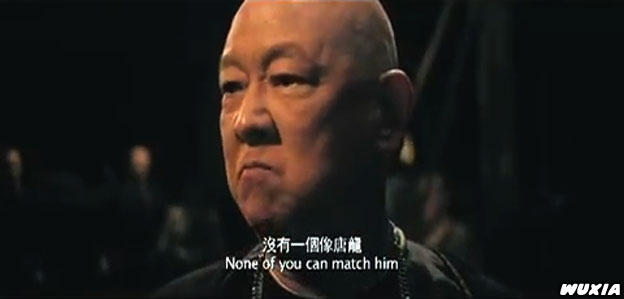
Jimmy Wang Yu was introduced halfway into the film as the leader of the 72 Demons, a group of assassins and the father of Tang Long. The actor brought the character to life, crafting a villain that was evil to the core and feared by his own men as much as the law. Upon learning that his son was hiding out and had even fathered a grandchild the evil master rode out in search of him.
What happened next was a series of dramatic battles between Tang Long and the 13th Madam (his stepmother) played by veteran martial arts actress Kara Hui and his father. The fight scenes were very well done, directed by Donnie himself. Tang Long tried to fake his own death to the clan by slowing his heartbeat and breath to a crawl with the aid of Xu Baiju's acupuncture needles. If he did not try to convince the 72 Demons that he was dead they would have hunted him to the ends of the Earth. They would have killed his family and villagers to get to him. When he finally was discovered by the clan he did something even more dramatic than play dead, SPOILER ALERT: he cut off his own arm and turned it over to the clan in an attempt to get out. If the Japanese Yakuza thought that cutting off a finger was an act of loyalty then clearly they had not heard of Tang Long! This did not appease the clan or his father.
The last part of the film was very well done. The master was waiting patiently for his son to return to his family, sitting at a table holding his grandchildren hostage. The scene between Donnie and Jimmy was very powerful. Wang Yu was at his best when he was playing up the intimidating father figure. The last fight in the film pitted the one-armed swordsman against Wang Yu. This bit of fanservice was a sort of passing of the torch. It could not have happened better between any other actors.
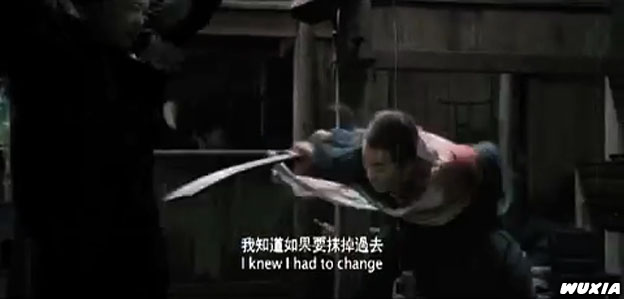
Jimmy Wang Yu was a successful actor but never seemed to hit the stratosphere like Bruce Lee or Jackie Chan. Donnie Yen could be argued as having the same luck. Yen had an incredible volume of work but was not a globally recognized name like his contemporary Jet Li. Neither of the actors were destined to become big stars in the west or be featured in Hollywood-backed films. Wu Xia was conceived by the director and Yen as an homage to the One Armed swordsman and other films of that era, not as a remake. The film could not have told a better story. Donnie Yen created another memorable hero that was every bit as good as his other characters but the highlight of the film was actually seeing Jimmy in action once more. Wang Yu spent decades fighting controversy, all while falling in and out of the spotlight. Little consideration was given to him as a martial artist, let alone as a writer or director. His contributions to the industry were rarely acknowledged because of his personal history. He was all but forgotten by modern action cinema. It took 43 years after creating the archetypical hero for him to be remembered once more. Jimmy Wang Yu was redeemed when he played an irredeemable villain. Fans of the genre owe it to themselves to pick up this film and see the greatness of the forgotten legend. The next blog will highlight the further evolution of HK cinema and how the hero changed to fit with the times. Instead of the reluctant master as with Wang and his contemporaries this new archetype was somebody that already had amazing fighting abilities but wanted to remain anonymous. Due to circumstances beyond their control they found themselves defending the weak and often fighting for their lives. The next blog will look at the life and influence of "the Dragon". As always if you enjoyed this blog and would like to sponsor me please visit my Patreon page and consider donating each month, even as little as $1 would help make better blogs and even podcasts!
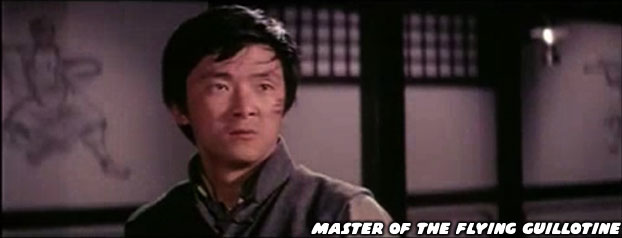

No comments:
Post a Comment